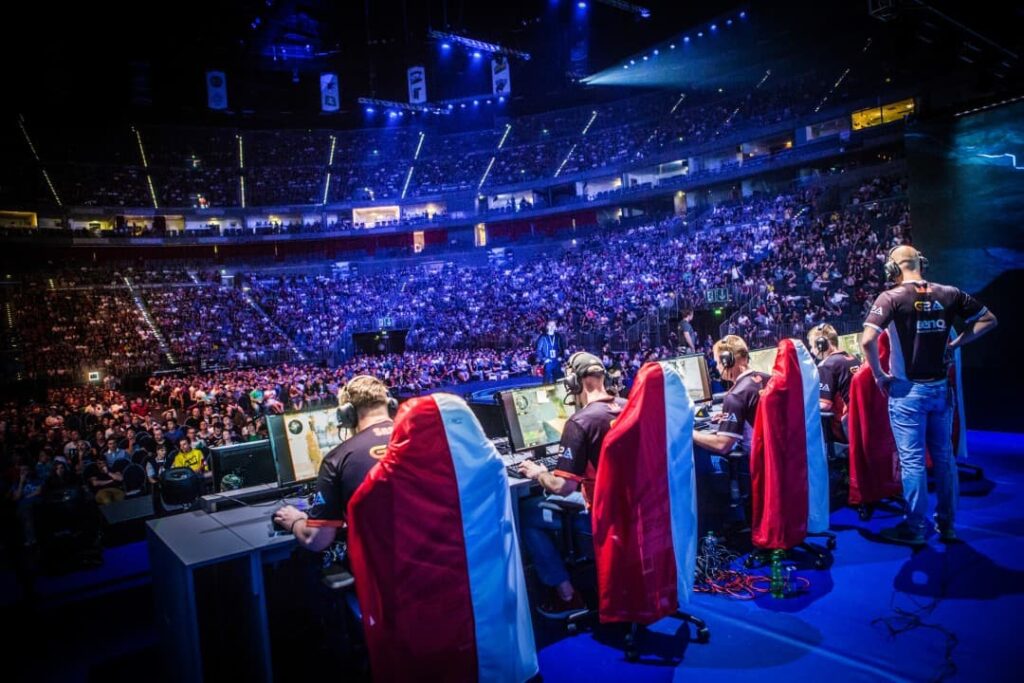
- Posted On March 1, 2023
- No Comment
The discussion over whether traditional sports or esports will be more popular in the future has heated up as technology and media continue to influence how we watch and experience sports. With distinct advantages and difficulties, both businesses have a sizable fan following and significant money. In this comparison, we’ll look at how the two differ regarding the fan bases’ racial and economic makeup, potential for future expansion, sources of income, and the likelihood of success. We’ll also look at how each industry is developing and changing to meet the needs of the public and make use of emerging technologies. Esports matches or conventional sports matches will ultimately have the upper hand. Examining these two sectors more closely will help us determine what the future holds for them.
Will Be Esports More Popular?
Since the beginning of the esports industry in 1972, it has grown rapidly. It uses cutting-edge technology, but also has traditional elements. If you’re still unsure about how popular the sport is, consider these compelling arguments for why this won’t change in the ensuing decades:
Comparison of Fan Base

Traditional sports fans and esports fans differ in terms of tastes, attitudes, and conduct. Regular sports followers typically have a wider range of ages and genders, as well as a strong sense of team loyalty. The majority of the time, they support their teams by purchasing merchandise, attending games, and watching TV. Esports fans, in comparison, are typically more youthful and male, and place a higher value on online contact and involvement. They take part in online communities, watch content on streaming services, and follow certain esports titles and players. Although the fan bases of esports events have certain similarities, there are also big differences between them, so it’s unclear which will live on and develop over time.
Growth Potential
Even though their fan bases and revenue sources differ, traditional sports and esports both have significant development potential. However, there is still room for growth, particularly in developing markets like Asia and Africa. Regular sports have a long history and a loyal following. In a way to draw in new fans, several sports are becoming more open and welcoming. Yet, esports is already expanding rapidly and don’t appear to be slowing down anytime soon. By 2023, 15.5% of US internet users will be esports spectators regularly, according to analysts. Based on the sector’s current growth rate, it is anticipated that major sporting events like the Champions League and Formula 1 will underperform. Major sports teams and media businesses are investing in esports, which is helping the industry become more mainstream. Both conventional sports and esports have a lot of development potential, and it will be interesting to observe how each develops over the next few years.
Revenue Stream
Traditional sports get money via concessions, merchandise, sponsorships, TV rights, and ticket sales. These well-established revenue sources have long served as the main source of funding for sports clubs and organizations. Particularly broadcasting rights are a big source of income to withdrawal, with TV networks shelling out billions for the exclusive right to show important sporting events.
In contrast, esports earn money via sponsorships, advertising, media rights, game publishers, and merchandise. The esports sector depends heavily on brand alliances since sponsors want to connect with the huge enthusiastic and youthful fan base. Esports is also heavily dependent on broadcasting services like Twitch and YouTube, which generate income via advertising and subscriptions.
While traditional sports tournaments and esports tournaments have certain parallels, they have quite different funding streams. It will be intriguing to watch how esports’ revenue streams change as it expands and to see if it can compete financially with traditional sports.
The Future

Esports is the way of all sports in the future. Although that could seem like a bold claim, more and more evidence is corroborated it. Participants and viewers alike today demand digital interaction while watching. The best approach to generate digital engagement is through “gamification,” or turning what you see into something you can play.
Esports is demonstrating a new kind of future to fans even though the “regular” sports world is still much larger than the competitive esports community. In the future, experiences will fully exploit fans’ thirst for interaction in their spare time. Esports incorporates these ideas into people’s free time because today’s top consumers want to not just watch or listen but actively take part.
Conclusion
The popularity of traditional sports versus esports is a controversial subject with no obvious winner in sight. Both have enormous fan bases, several sources of income, and tremendous growth potential. Their fan bases’ demographics, infrastructure, and commercial methods are where the two diverge. Esports is already expanding rapidly and have the potential to overtake traditional sports in terms of popularity, even though traditional sports have a long history and well-established infrastructure. Both traditional sports and esports are expected to be incorporated into sports in the future, with esports becoming more pro and lucrative. The evolution and adaptation of the two sports to shifting fan tastes and technology improvements will be fascinating to watch.